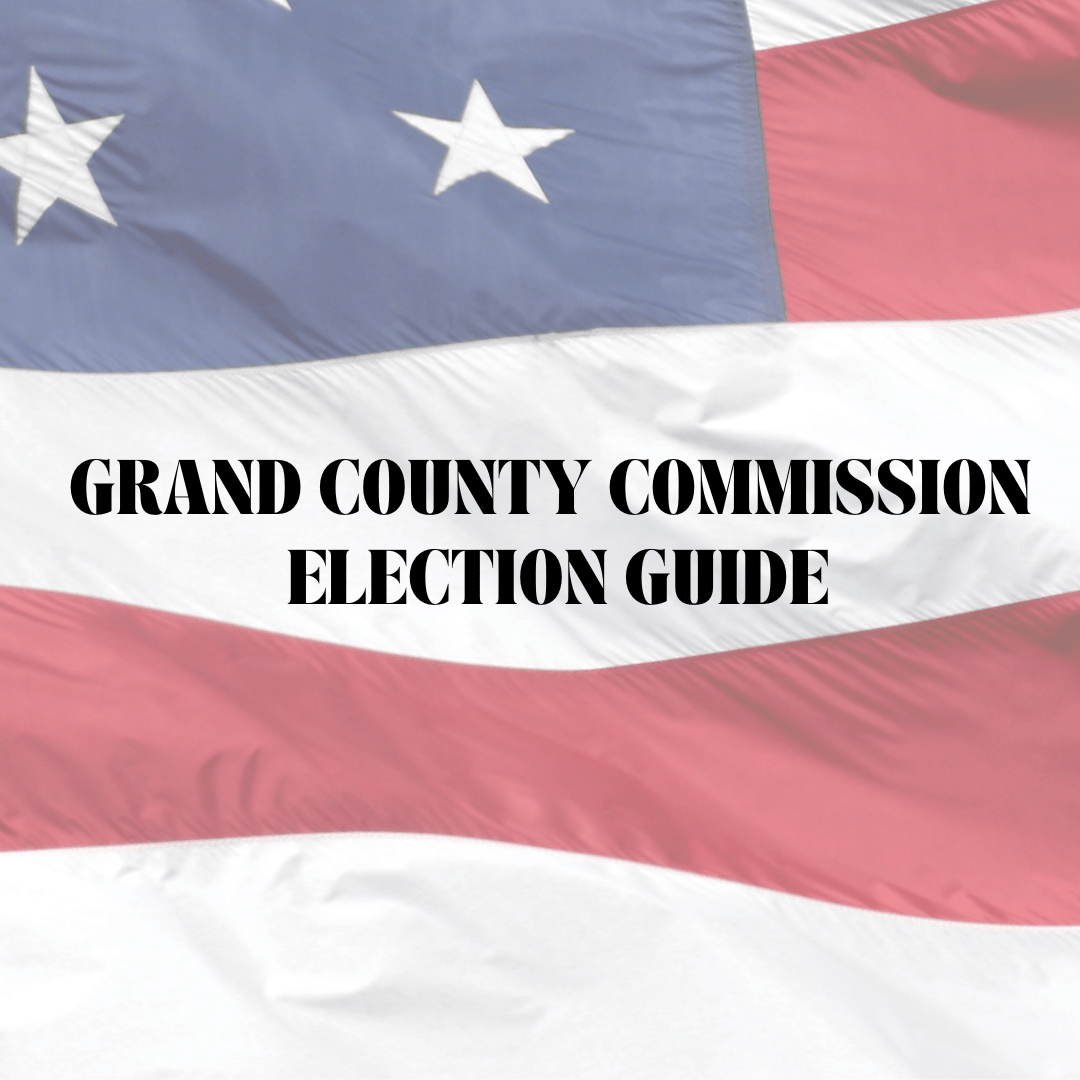After another lively discussion, the Grand County Commission again postponed adopting the Alternative Dwelling Overlay ordinance that the planning department has been drafting for several months. The policy would allow unconventional dwellings such as RVs, tiny homes, tents and vans to be used as long term residences in approved developments; the intention is to relieve the current shortage of attainable housing for Grand County workers. The ordinance was on the agenda for a vote, but commissioners asked Planning Director Elissa Martin to add language to amend the application process and tweak wording about the desired locations of the developments, and bring it back before the commission at their next meeting.
Planning staff have held public engagement sessions to gather input from residents; the Planning Commission and the County Commission have discussed the concept at length at various meetings, but several sticking points remain.
Appropriate locations
Commissioners discussed whether the ordinance should include an overlay map specifying areas where alternative dwelling developments would be allowed, or whether the ordinance should simply describe qualities of a suitable location, and proposed projects would then be evaluated individually by the commission. County Attorney Christina Sloan argued in favor of an explicit map.
“Based on the public comments we’ve received and based on the history of outcry… from Rural Residential, I think we need to work harder now to create an overlay map that determines what are the appropriate parcels for this,” Sloan said.
Policymakers have been hesitant to prohibit alternative dwelling developments in all rural residential zoning because there are specific parcels within that zoning that seem suitable for such projects—including “the Swamp,” an area that’s been used as a campsite by employees of local guide company Navtec for years. However, commissioners agree with many vocal community members that they don’t want to change the character of rural neighborhoods by approving alternative dwelling developments in areas where they don’t make sense.
Commissioner Trisha Hedin said she’s hearing concerns from people who live in rural residential zoning about the potential effects of alternative dwelling developments on their neighborhoods.
“Being representative of the rural part of the county, I’m getting a lot of backlash,” she said.
Sloan reminded commissioners of the Strawburb development, an affordable housing project completed a few years ago in a rural neighborhood that subdivided a property into smaller lots than the surrounding neighborhood. Neighbors of the development hired an attorney and threatened to sue.
“Every single time one of these applications come up, it’s a lot of work for all of us,” Sloan said. “I think we need to put in the work now to narrow what’s appropriate.”
Commissioner Kevin Walker argued that because approval of the developments will be legislative, the commission will have the discretion to approve or deny applications based on suitability guidelines already outlined in the ordinance. Preferred locations, according to the draft, are in zones other than rural residential; they’re compatible with an alternative dwelling development; their historic use is compatible with alternative dwellings; they’re on an arterial or collector street, to minimize traffic impacts; and they’re near a commercial node or work center.
Commissioner Evan Clapper suggested including an “intent to apply” step in the application process, similar to a protocol recently implemented in the county’s special events permitting process, to prevent applicants from putting in a lot of effort developing a project only for it to be denied by the commission later because of its location. People with project ideas could present a preliminary description and the commission or another body could let them know whether it was a project they would consider.
“That makes sense,” Walker said. “In some cases, the decisions are going to be based mainly on the location, not on a detailed site plan.”
During the discussion, commissioners also suggested that the criteria of proximity to a “commercial node” or “work center” be loosened; Martin revised the draft to say commissioners will consider commute time to job locations in evaluating applications.
Pilot program cap
Commissioners also discussed a maximum number of alternative dwelling units to be allowed in the pilot program. The current draft sets the threshold at 150 units, which Sloan thinks is too high. In previous discussions, policy makers suggested that many of the 150 “slots” would be lost to attrition; others would be balanced by current illegal campers moving into legitimate alternative dwelling developments once they’re available and code enforcement officers feel justified in compelling those campers to comply with county code. One existing long term RV park hopes to convert from an overnight accommodations business to a residential property, which could potentially absorb more of those 150 slots. However, Sloan isn’t convinced any of that is certain, and she anticipates substantial outcry from the community.
Commissioner Kevin Walker argued in favor of a higher cap, pointing out that the commission is not obligated to approve the maximum number.
“We wouldn’t vote for it unless it was a good idea,” he said. “I’m more worried about the cap being too low than too high, for that reason.”
Other commissioners agreed that they’re comfortable with the higher cap.
Martin said she would draft new language outlining the “intent to apply” process and more clearly stating that developments would only be approved in rural residential zones in very specific circumstances. Commissioners will look at the ordinance again at their next meeting on Nov. 15.





